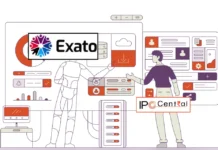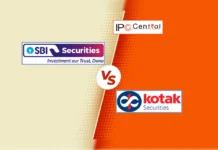CSB Bank (formerly known as Catholic Syrian Bank) is one of the oldest private sector banks in India with a history of over 98 years and has a strong base in Kerala along with significant presence in Tamil Nadu, Karnataka, and Maharashtra. Through CSB Bank IPO analysis, we try to understand if investors can bank on this veteran name.
It offers a wide range of products and services to its customer base of 1.3 million as on March 31, 2019, with particular focus on SME, Retail, and NRI customers. It delivers products and services through multiple channels, including 414 branches (excluding three service branches and two asset recovery branches) and 277 ATMs spread across 16 states and four union territories as on March 31, 2019, and various alternate channels such as micro ATMs, debit cards, internet banking, mobile banking, point of sale services and UPI.
The bank has four principal business areas, namely, (a) SME banking, (b) retail banking, (c) wholesale banking, and (d) treasury operations
IPO Dates– Nov 22 to Nov 26, 2019
Promoter – The Promoter of the bank is FIH Mauritius Investments Ltd (“FIHM”)/Fairfax India Holdings Mauritius. FIHM holds 86,262,976 Equity Shares, representing 50.09% of the issued, subscribed and paid-up equity share capital of the bank.
CSB Bank IPO Analysis: Issue Details
Issue Size – Fresh issue of INR24 crore + OFS of INR385 crore = INR410 crore at upper band
Average cost of promoter buying is INR140, IPO at INR195.
Fresh issue – 12,30,769 shares – INR24 crore at upper band
OFS –1,97,78,298 shares – INR386 crore
Total INR410 crore issue size
Read Also: Burger King IPO: Here is what you need to know
CSB Bank IPO Analysis: Objects of the Offer
The objects of the Offer are to augment Bank’s Tier-I capital base to meet Bank’s future capital requirements which are expected to arise out of growth in Bank’s assets, primarily Bank’s loans/advances and investment portfolio and to ensure compliance with Basel III and other RBI guidelines. Further, the proceeds from the Offer will be used towards meeting the expenses of the Offer
CSB IPO Analysis: Risks
As on March 31, 2017, March 31, 2018, and March 31, 2019, 4.91% or Rs 4,057 million, 3.99% or INR3,867 million, and 4.05% or INR4,418 million, respectively, of its total advances were unsecured.
Contingent liability of INR727 crore (H1FY20)
Geographical concentration risk – As of March 31, 2019, out of 414 branches, 353 branches were located in southern India (272 branches located in Kerala and 56 branches located in Tamil Nadu) constituting 85.27% of total branch network. As on March 31, 2019, of their total deposits of INR151,239 million, INR101,278 million and INR17,710 million were received from Kerala and Tamil Nadu, respectively, constituting 66.98% and 11.70% of total deposits, respectively. As on March 31, 2019, out of total advances of INR106,152 million, INR33,834 million and INR25,983 million were in Kerala and Tamil Nadu, respectively, constituting 31.87% and 24.48% of total advances, respectively.
As on March 31, 2019, gold loans represented 31% of the total loans outstanding
CSB Bank IPO Analysis: Strengths
Strong capital base for growth
The Bank’s capital position has significantly strengthened post FIHMs investment. Pursuant to a preferential allotment of Equity Shares and warrants to FIHM worth INR7,207.53 million in Fiscal 2019 and the balance amount of INR4,869.29 million in Fiscal 2020, they have a strong capital base for growth acceleration, something which they were not able to accomplish in past due to paucity of capital. As per the Basel III Norms, the CRAR, on March 31, 2019 and September 30, 2019, was 16.70% and 22.77% (including capital conservation buffer), respectively. This is above the minimum prescribed CRAR of 10.875% (including capital conservation buffer of 1.875%) stipulated by the RBI in the Basel III Norms. Capital augmentation post infusion of funds by FIHM helped vitalize the Bank’s growth engine.
Strong channel network and trusted brand in South India
They provide products and services primarily through an extensive physical network of branches and ATMs. They operate in 16 States and four Union Territories in India, reaching 1.3 million customers through 412 branches and 290 ATMs, as on September 30, 2019. In addition to physical network, they have made investments in development of alternate channels from time to time. Their alternate channel network comprises of ATM debit cards, internet banking, mobile banking, point of sales (“POS”), QR payments, UPI, 24*7 phone banking, ePassbook, micro ATMs, prepaid (co-branded) cards, and payment gateway services through tie ups. The number of transactions undertaken through Alternate Channel Network has increased from 42.10% in March 31, 2017 to 56.57% in March 31, 2019 and was 64.18% for the six month period ended September 30, 2019, against the branch manual transaction which includes cash, clearing, transfer, RTGS, NEFT done from branches of our Bank (“Branch Manual Transaction”). With over 98 years of history, the bank has also developed a well-recognized and trusted brand in south India, particularly in the states of Kerala and Tamil Nadu, where they have built strong relationships with many of their customers, which have been one of the key growth drivers.
Read Also: Ujjivan Small Finance Bank IPO gets SEBI nod, what you need to know
Streamlined risk management controls, policies and procedures
They manage risk by ensuring that advances are adequately secured. As on March 31, 2017, March 31, 2018, March 31, 2019, and September 30, 2019, 95.09% (i.e. INR78,659 million), 96.01% (i.e. INR92,985 million), 95.95% (i.e. INR104,637 million), and 94.85% (i.e. INR108,155 million) respectively, of their advances were secured. The bank’s efforts in strengthening risk management have improved asset quality. Gross NPAs decreased to 4.87% as of March 31, 2019 from 7.25% as of March 31, 2017. Further, gross NPAs were 2.86% as on September 30, 2019. The net NPAs decreased to 2.27% as of March 31, 2019 from 4.12% as of March 31, 2017. Further, net NPAs were 1.96% as on September 30, 2019, while provisioning coverage ratio was 65.50%, 75.83%, 78.16% and 79.45% in respect of NPAs (including technical write-offs) as of March 31, 2017, March 31, 2018, March 31, 2019, and September 30, 2019, respectively.
CSB Bank IPO Review: Key observations from financial statements

- GNPA NNPA on a constant downtrend – Positive
- Capital adequacy amongst the highest in its peer group – Positive
- NIMs also one of the highest
- As of Sept 31, 2019, 94.85% (i.e. INR108,155 million) of their total advances were secured – Positive
CSB Bank IPO Analysis: Valuation and Peer Comparison

CSB has posted turnaround results in 6MFY20 and has improved its operational and financial performance. We believe the bank should do well with the recent capital raise and its strong risk management frameworks. On valuation front, at the upper end of the price band, CSB is valued at a 2.31 P/BV and 25.31x P/E. Taking into account huge growth prospects and its comfortable asset quality stock looks attractive for investment. We give ‘SUBSCRIBE’ rating in the stock for listing gains.
Long term – No view currently
IPO Meet Takeaways
I attended the analyst meet and the takeaways are as follows –
Credit costs have come down from 1.6/1.7% to 0.4% now
MSME proportion in SME portfolio to go up as the management sees good yields here and Low NPAs. One team from a leading private bank is joining CSB especially for this.
Staff count reduced from 3000 to now 1900.
Retirement age at 58 years now vs 60 years earlier.
Cost to income ratio came down significantly in H1FY20 due to high staff costs earlier which have been streamlined now.
Loan bookMix– Gold Loans (33%), SME (30%) and Corporate (25%).Corporate portfolio to come down gradually over a period.
Renewal rate of retail deposits at 98%!
Promoter holding (Fairfax) post issue will be 49.73%. (As per RBI condition, the promoter will reduce its stake to 15% over 15 years. RBI Rule states that no permission required for promoter to hold 5% in bank and with permission 10% is allowed.)
Outlook – The company is targeting branch expansion focusing on 1 year break even with the branch’s focus on gold loans as for that the resources are much cheaper.
The IPO is now being traded in the unorganized market and is commanding a grey market premium too. Please check out our discussion page on CSB Bank IPO for more updates.







































Great review